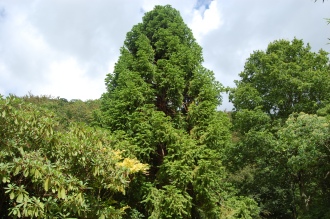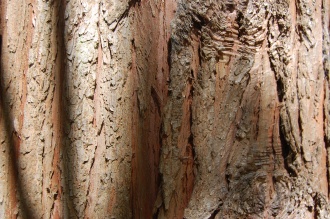Position: Full sun to partial shade
Flowering period: Insignificant, male flowers in May
Soil: Moist, well-drained
Eventual Height: 40m
Eventual Spread: 9m
Hardiness: 6b, 7a, 7b, 8a, 8b, 9a, 9b
Family: Cupressaceae
Cunninghamia konishii hayata is a fast growing evergreen coniferous tree with a columnar, upright habit and drooping branches. Its blue/ green leathery leaves are are needle like, spirally arranged, up to 7cm long and 3 5mm broad. Its red/ brown bark is longitudinally fissured , then cracking into irregular flakes. Its monoecious pollen cones are small and inconspicuous and produced in May. Its seed cones are green initially, turning brown with age.
Cunninghamia konishii hayata, commonly known as Hayata Tree, is native to Taiwan. In its native habitat it grows in mixed woodland in small stands. This tree is classified as Endangered according to The IUCN Red List of Threatened Species.
The etymological root of the binomial name Cunninghamia is named after the British Doctor, Dr. James Cunningham, who introduced this species into cultivation in 1702. Konishii may be derived from the Japanese meaning ‘small west’, reader feedback as always would be welcome.
When available the landscape architect may find Cunninghamia konishii hayata useful as a large, evergreen, attractive specimen tree in a parkland setting. It does not like exposure to drying winds.
Ecologically, Cunninghamia konishii hayata is of little value to UK wild life.
Cunninghamia konishii hayata prefers moist, fertile, well-drained soils. It tolerates most pH of soil. It dislikes dry soils.








In 1910, Hayata wrote, in Actes du IIIme Congrès international de botanique: “Previous to this publication, the author had considerable collections from the mountains made by the lamented Mr. N. Konishi, who made several excursions to the mountains for many years. He was the discoverer of Taiwania, and a new species of Cunnighamia, which was named C. Konishii in commemoration of his great botanical services. Much more has been expected from him, but last year he went to the island of Hainan, where he was taken with a bad fever. After some months, he died much to the sorrow of the present author and a great loss to the botanical world.”
His full name: Nariaki Konishi
As always David, thank you for taking the time to correct and add information to our posts.
Also, Cunninghamia honors two individuals: “In communicating specimens of this plant to the late M. Richard, for his intended monograph of Coniferae, I added some remarks on its structure, agreeing with those here made. I at the same time requested that, if he objected to Mr. Salisbury’s Belis as liable to be confounded with Bellis, the genus might be named Cunninghamia, to commemorate the merits of Mr. James Cunningham, an excellent observer in his time, by whom this plant was discovered; and in honour of Mr. Allan Cunningham, the very deserving botanist who accompanied Mr. Oxley in his first expedition into the interior of New South Wales, and Captain King in all his voyages of survey of the Coasts of New Holland.”